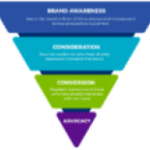To paraphrase an old saying: “New customers are silver; old customers are gold.” Keeping customers you already have is less expensive, consumes less time and provides a reliable income stream. Despite this, marketers spend remarkably little effort on customer retention.
“About how much time and effort, and on a percentage basis, are you seeing being absorbed by retention marketing in your world?” Ruth Stevens asked the audience at The MarTech Conference last fall. “Well, you may be surprised to learn that among most B2B marketers, it averages out to be around 15%.”
This is at odds with a company’s primary objective of acquiring and retaining customers. What makes it odder is that research shows that a significant portion of B2B revenue originates from existing customers. A Forrester report found that 73% of B2B revenue comes from existing customers. So, less than a quarter of B2B revenue actually comes from new accounts.
Dig deeper: Why marketers must move from retention tactics to customer respect
The focus on new accounts comes from sales teams incentivized to pursue them. “Well, of course, our sales counterparts are demanding it,” she said. “You know? Leads. Give me leads.” As a result, it falls to marketing to drive the importance of keeping the customers you already have.
Here are seven ways to keep your most profitable customers.
1. Foundational excellence
An exceptional product or service, coupled with a seamless and positive customer experience, is the bedrock of customer retention. “Your product/service has to be great, and the customer experience also has to be great,” Stevens said. “All the clever marketing in the world is not going to fix it [if that’s not the case]. It’s not going to keep your customers sticking around if they’re not satisfied and getting real value on these points.”
2. Swift, proactive problem resolution
Quickly addressing customer issues is essential, but not enough. Successful companies actively seek out and resolve problems before customers tell them about them, which can significantly bolster customer loyalty.
“It’s a good idea for marketers to get involved with their customer service teams,” she said. “Not only to help them solve problems but also to help them analyze where the problems are arising and maybe find substantial issues across the firm that could be fixed upstream and reduce the problems arising later at all.”
Stevens said Michael Lowenstein’s book “Customer Win Back,” has compelling evidence that “customers whose problem was surfaced and resolved turned out to be more loyal than the customers who didn’t have a problem in the first place.”
3. Penetration marketing
Marketing teams can use their skills in data analysis to help account managers find valuable insights that lead to better upselling and cross-selling opportunities. Stevens suggested “using data analytics to develop a list of next best products based on the product purchase patterns from the past.” This can also surface helpful reasons for the sales or account management teams to call the customer. These can include new, relevant product developments or other ide





